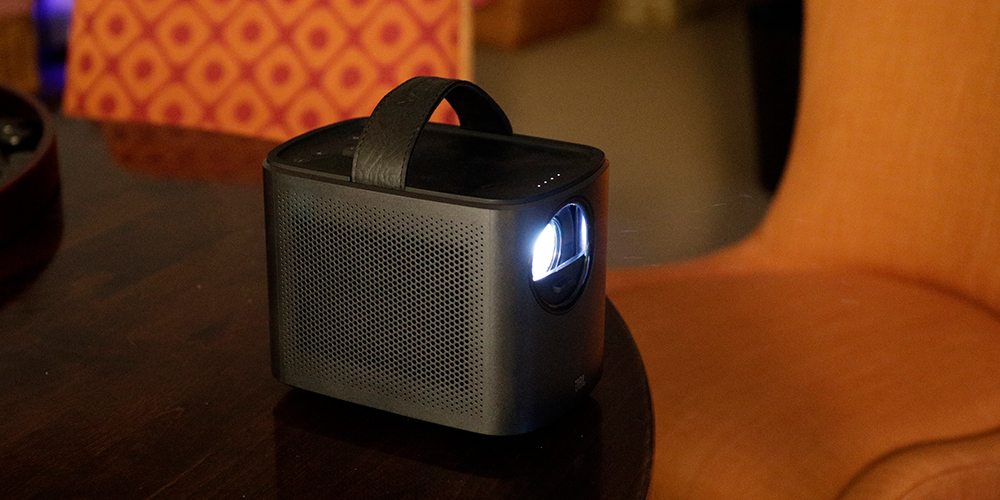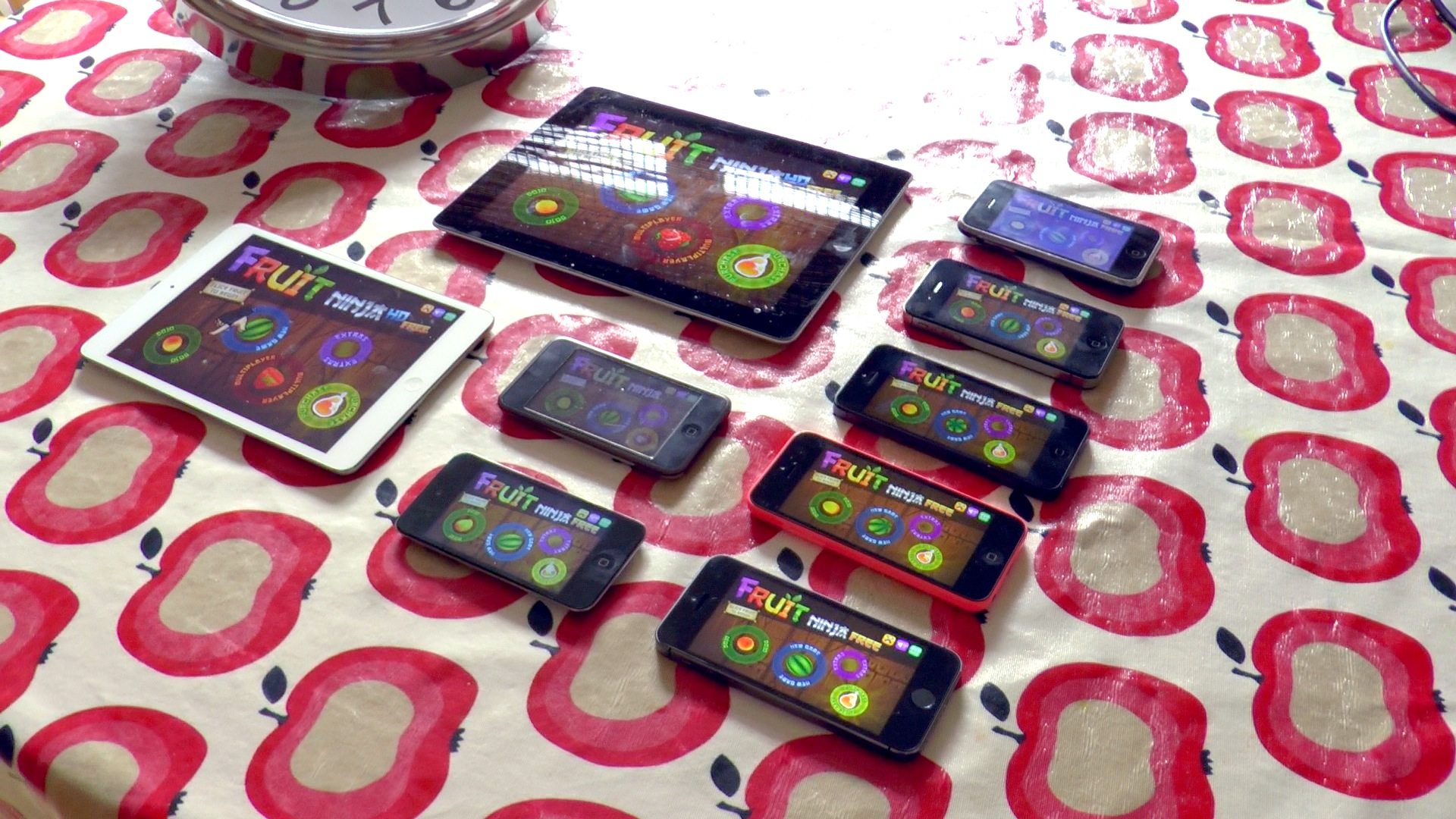
Eight years ago, I wrote on GeekDad about building an outdoor movie theater. It was a great project and I’m happy to report we are still watching movies outside. A couple of times a year, we invite the whole neighborhood and it’s a really wonderful tradition that I am so very thankful that we’ve kept going. The screen and components have been upgraded over time, but it’s still the same thing at its core: family and friends enjoying time (and popcorn) together.
We don’t do it as often as we could though. It’s a hassle to setup and our schedules don’t allow for the frequency I’d like. While I can’t do anything about competing parties, dinners, and other events, there is a product that could dramatically cut down on my setup time: the Mars portable projector from Nebula.
What Is Mars?
The tagline for the product is that Mars is “The world’s first portable cinema with theater-grade picture and sound.” That’s a pretty bold statement, so I was curious if Mars can live up to the hype.
With 3,000 lumens, 10000:1 contrast, 4K supported 1280 x 800 resolution, and up to 300″ projection, the picture is darn impressive. The sound comes from two internal 10 watt JBL speakers. It sounds better than you’d expect, but it’s still a stretch from theater-grade. (That’s OK, it has a 3.55mm Audio Out jack.)
Still, the Mars has a vast number of other benefits, which we’ll get into in a moment. But the most amazing thing is that all of this—the 300″ picture, projected at 3,000 lumens with decent sound and a host of other features—comes in a package that is only 7 x 5.5 x 4.5 inches and four pounds. Talk about a dynamo in a small package!

The Other Features of Mars
The first thing you’ll notice with Mars is that it has a nice, wide leather strap integrated into its design, so its easy to carry down the street to a neighbor’s house, from the car to a tent, or anywhere else you want to show off portable video. Flip Mars over and you’ll find a universal tripod socket for easy and stable projection. The base also has a thick rubber ring that really grips surfaces it sits on.
Simply sliding the lens cover up or down powers the unit on and off, and a muted, unobtrusive row of LEDs exhibits the power level, which is important because Mars comes with a 3-hour battery. That life comes courtesy of a 19,500mAh power cell and a thankful nod to Nebula’s parent company, Anker, global leaders in powerbanks.
But on the back, there’s still the DC In for the standard amp & a half/100-240V power adapter. Right next to it are HDMI and USB 3.0 inputs, alongside the already mentioned Audio Out. The back of the Mars is also where the IR receiver is located.
The Mars is able to project in a variety of modes (hanging upside down from ceiling, mirrored, etc.), auto or manual keystone correction, 3D mode, picture mode, and color temp. Or you can customize the picture to compensate for the wall you project on or personal tastes.
To make it completely portable, the Mars has an App Manager, which allows you to download apps to stream, news to watch, or music to listen to. The list is pretty limited but the device comes with TED and YouTube preloaded. Finally, a 64-bit quad-core 1.5Ghz chip runs it all—quietly. It’s literally whisper quiet, making just 32 dBA, only 2 decibels more than a whisper.
How to Use Mars
Mars can run off battery power, but if you have power available, it’s always best to choose that option. After deciding where you will be showing your entertainment, turn the unit on and move the Mars closer to or further away from a flat surface you are projecting on. The projector doesn’t have a zoom setting, so you’ll have to physically reposition it to achieve the size you want.
Next, use the remote to focus the picture. The Mars uses a rotating reticle to help you tune to a sharp picture and, if you’ve ever been to an eye doctor, there is something very similar and satisfying about the process, as the picture becomes clearer and clearer. As the picture sharpens, you’ll be amazed at the definition and clarity of the picture, especially one coming from such a small projector.
While there are limited streaming options in the device’s App Manager, you are able to watch tons of content by hooking up your existing media players. The first step is connecting the Mars to a network, providing you are hoping to stream, rather than connect a device directly to the Mars. It’s a fairly straightforward procedure and one you’re probably familiar with. Mars has a b/g/n antennae and, as long as your signal is strong, that procedure is easy to navigate and streaming is simple. However, if you want to be hard-wired, you can simply hook a laptop, disk player, game player, USB storage device, Roku, or other media streaming device to the Mars. Mars runs on an older version of Android, 4.4.4, which really limits the number of apps it can have on the device. While you can still stream through Mars, it would be nice if their were more onboard options. Rest easy though, you can download Netflix.

Why Mars Belongs in Your Home
I love sharing a movie outdoors with friends. It’s a somewhat magical time that truly feels like a very memorable shared experience—probably because it’s one of those things you don’t do all that often, because of the hurdles involved.
Nebula Mars is anything but difficult; it’s so small and very easy to setup. It’s versatile, a multi-talented device which you can use to project against your kitchen wall or the side of your house—or in any room. And in all instances, the picture is very impressive, especially when you look at the size of the projector.
With its battery power, it’s easy to grab the Mars and head over to the home of friends or family and within moments, be streaming photos from your family vacation or that afternoon’s hockey game, where your kid finally scored a goal. Or when you fire it up to show the just-dropped trailer for a new Netflix series, you’ll be considered a technology rock star.
The speakers are much better than expected but not theater quality. In large, open areas, the sound disappears a bit, especially if you’re away from the Mars. But indoors, they are pretty acceptable, about what you’d expect from your television’s speakers.
I would be remiss if I didn’t mention that Airplay playback can be hit and miss. When I first set up the device, I had a really difficult time getting the Mars to consistently stream from my phone, despite sitting just feet away from my router. Sometimes it sort of worked, sometimes it wouldn’t recognize my phone. At Nebula’s suggestion, I cleaned the cache of the Airpin (found in the App Manager) and streaming now works without issue.
Still, the Nebula Mars exceeds on almost all expectations. It’s certainly a case of big things sometimes coming in small packages and between its decent sound, long battery life (which gives Mars incredible portability), versatility in video input, and crisp, very bright picture, Mars is a surefire winner. Besides, who doesn’t want to play video games on the side of their house?
Nebula Mars Price & Availability
The Nebula Mars is available now and retails for $799.99. It is only available at Amazon and is currently discounted by 25%.

Disclosure: GeekDad received a copy of this product for review purposes.




